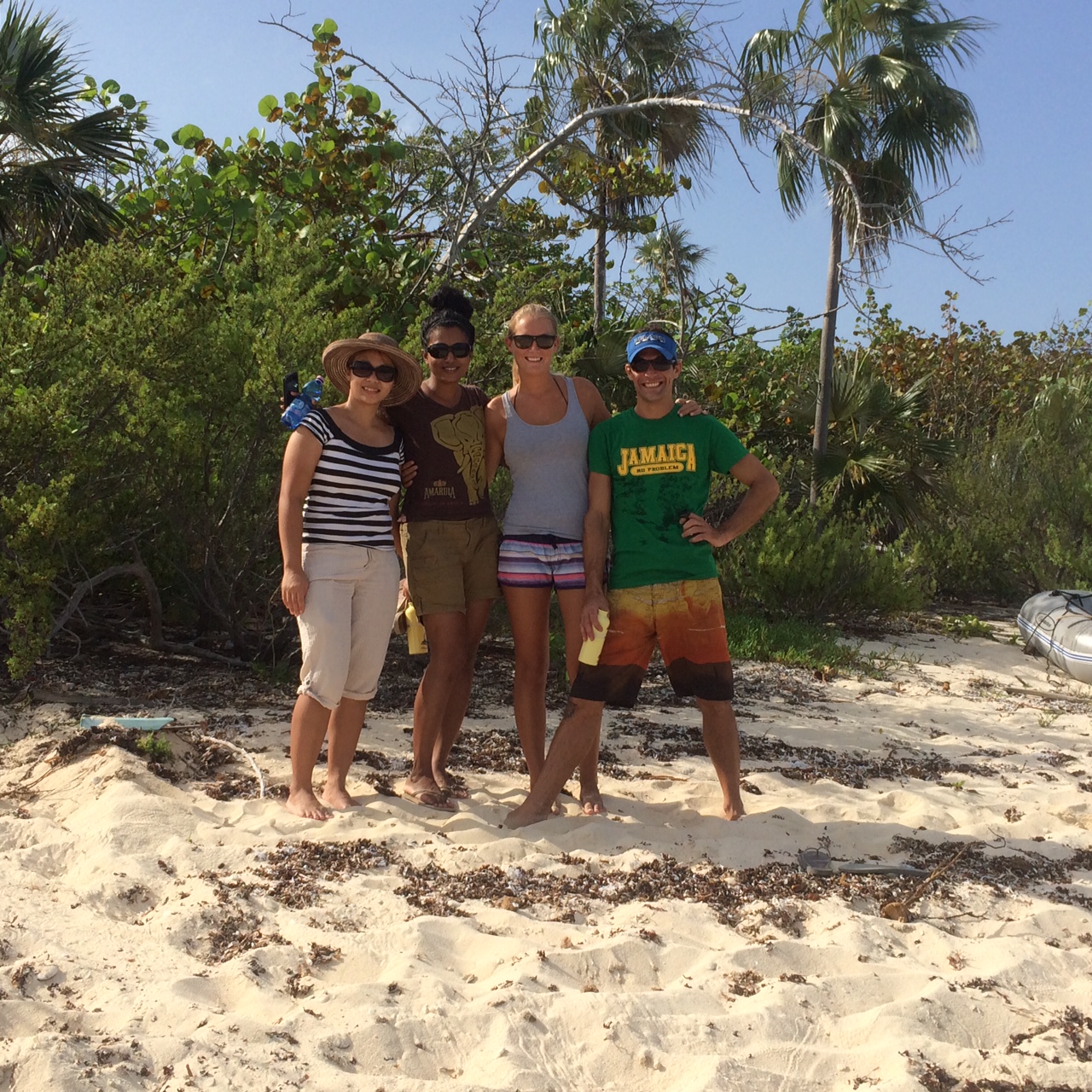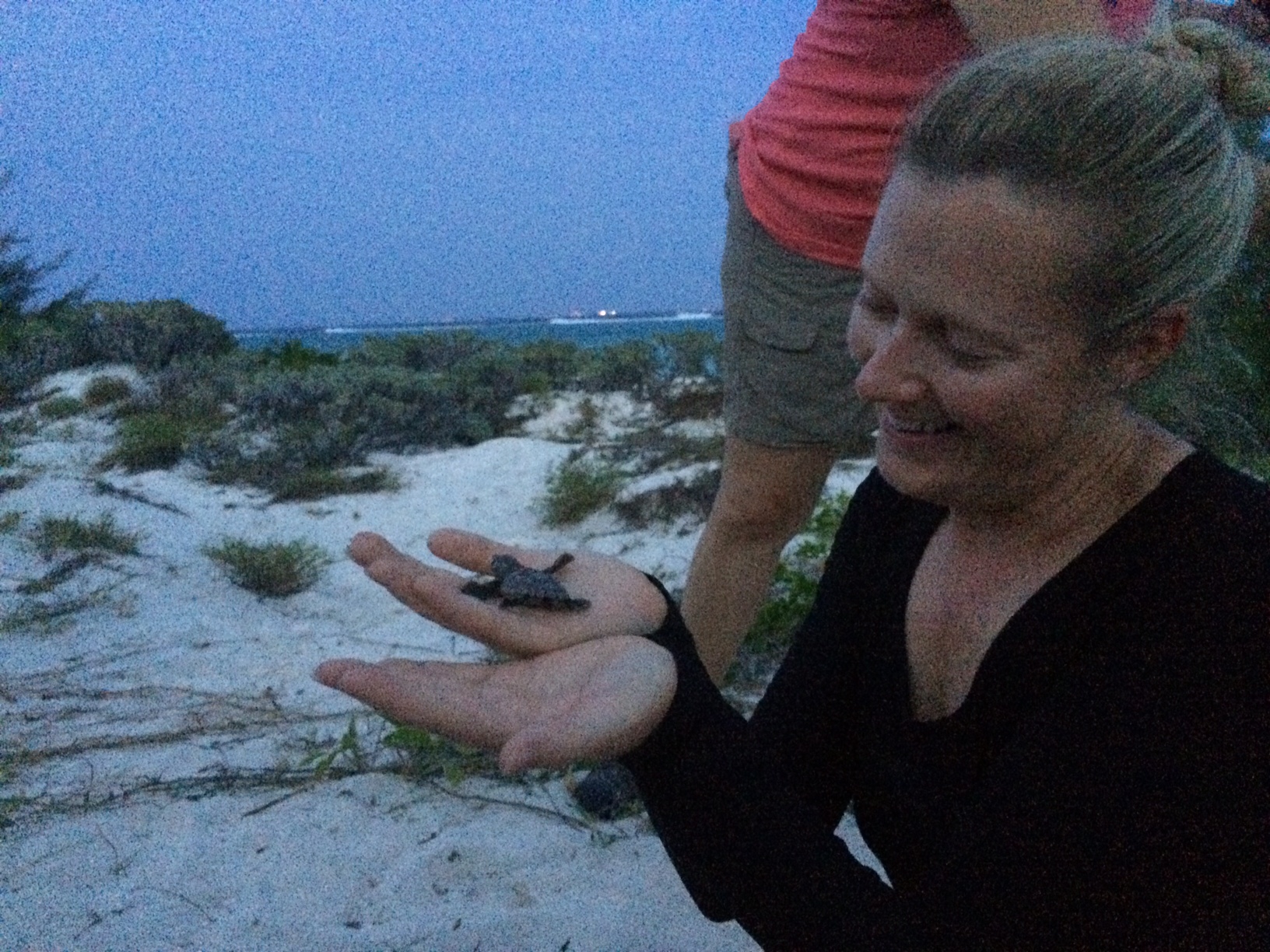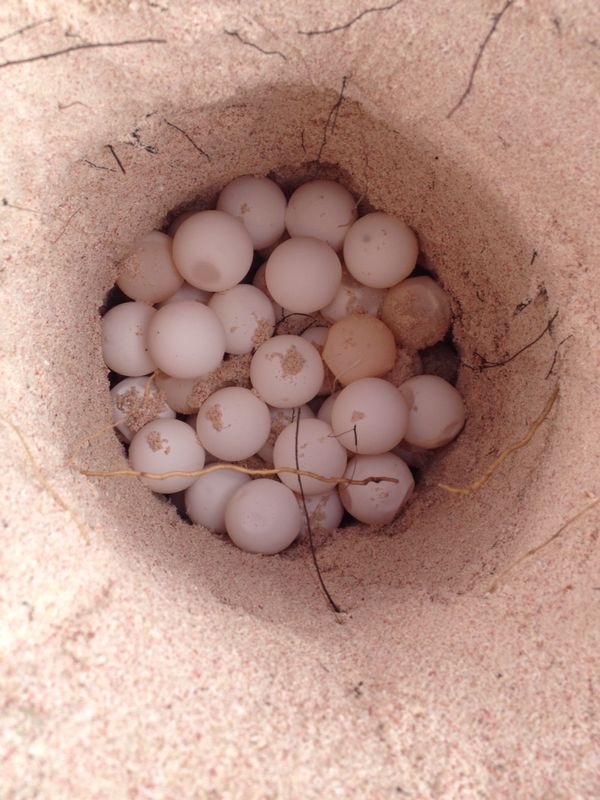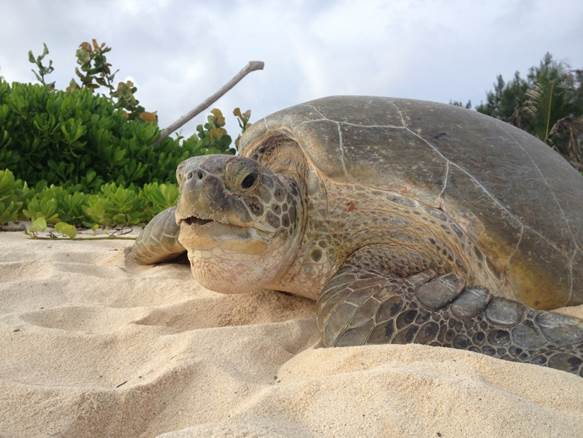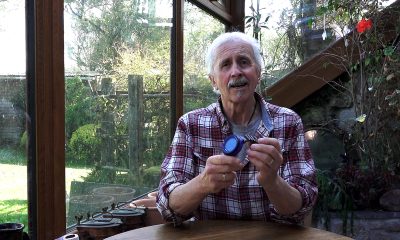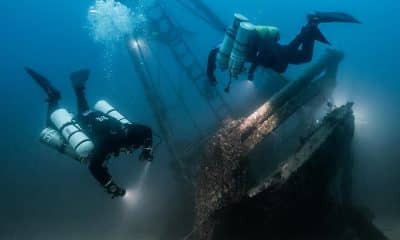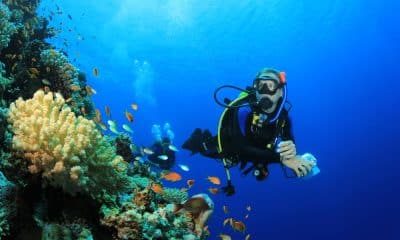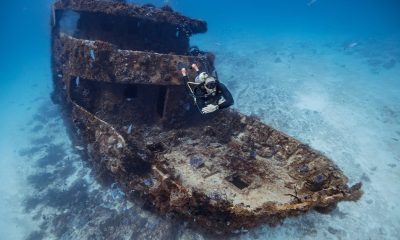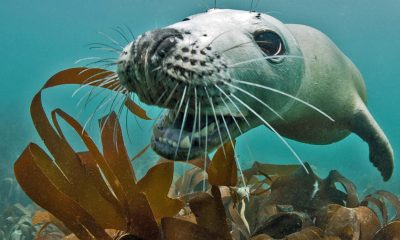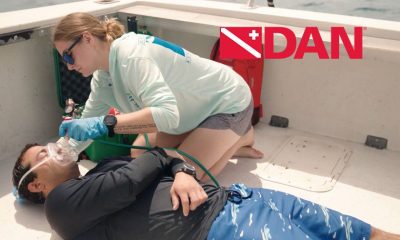Marine Life & Conservation
It’s Turtle Nesting Season and the Southern Cross Club in Little Cayman Stands Guard as the First Nest of the Season Hatches
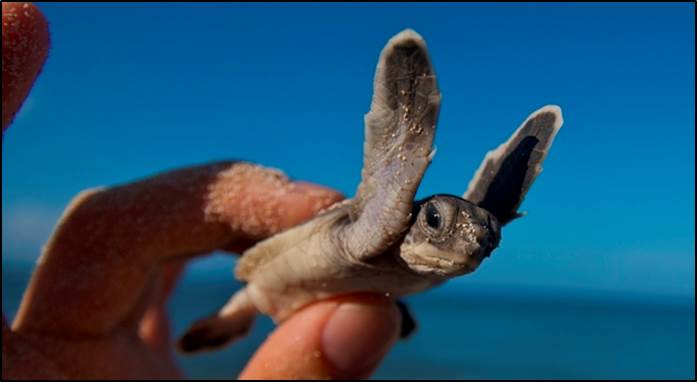
On a quiet Little Cayman beach on the evening of Saturday 5th July, a small group of lucky and excited turtle watch volunteers witnessed a rare and special event – the hatching of the island’s first turtle nest of the season. This is the ultimate payoff for the volunteers who work with the Cayman Islands Department of Environment’s Marine Turtle Research Conservation Program by walking the beaches to spot and protect turtle nests from May to November. It is also a rare one because predicting when a nest will hatch is never certain.
“It’s incredibly difficult to catch a nest hatching – we were very lucky because it is such a special thing!” says Jennifer Mills, general manager of the Southern Cross Club and long time turtle watch volunteer. Mills says they had an idea that the Loggerhead nest might hatch on Saturday night, and although their prediction was right, by the time they arrived on site most of the baby turtles had left and only four remained. “We could tell from the tiny tracks that those that had already hatched had made it safely to the sea.”
The volunteers carefully watched the last four babies struggle out of the nest, and they made sure the hatchings didn’t get caught up in nearby shrubs or fall victim to predators. Although Mills has been a turtle watch volunteer for 11 years, she has only seen a nest hatching 3 or 4 times.
“It was incredibly exciting because we watched the baby turtles take their first steps to the sea! To watch them go into the water – it’s a huge relief because you know they have at least made it that far and they have a long way to go,” she said. “We could not contain our excitement on Saturday! To witness such a wonder of nature is, for me, overwhelmingly wonderful. I feel very privileged to have been part of it.”
Fellow volunteer and Southern Cross Club co-worker Renita Schouten was also there to see the baby turtles begin their journey to the sea. “It was incredible! Being a turtle watch volunteer is one of the coolest things to do here. It’s a great project, all for the good of the island.”
The government’s turtle conservation program relies on volunteers like Mills, Schouten and other Little Cayman residents to help find and monitor nests during season, and at the Southern Cross Club a beach walk is organized every Monday. Residents working at neighbouring resorts also target specific beaches in groups, clearing trash and keeping an eye out for turtle activity. Beachfront home owners help out by walking those beaches, and Mills says this makes a big difference because all crucial areas are covered.
“This then leaves some key areas to be covered by group walks and we cover these areas in Spot Bay, Bloody Bay and Jackson’s. Our staff here is very supportive, religiously participating in the Monday group walk and sharing their experiences, creating awareness amongst the resort guests.”
The volunteers report their finds by calling the Sea Turtle Hotline 345-938-NEST (938-6378). New turtle nests are marked and protected. Mills says volunteer response this year has been outstanding.
“We are very lucky here on Little Cayman to have a community which genuinely cares about the island; our residents are conservation minded and have an avid interest in protecting the marine environment,” she said.
The Southern Cross Club and the Central Caribbean Marine Institute organized an island-wide beach cleanup in advance of nesting season to provide turtles with pristine beaches on which to lay their eggs. During May and June sea turtles mate and the females swim ashore to lay their eggs on the beach. In an enduring mystery of the sea, the turtles that lay their eggs on Little Cayman were hatched from nests on the same beaches. They come home to nest, and it is up to their human neighbours to protect nesting turtles, turtle nests and baby turtles.
“When the nesting is in full swing there are so many nests here, it is essential for the whole community to come together to support this project and together do all we can to protect our turtles,” says Jennifer Mills.
Department of Environment Research Officer Janice Blumenthal: “Thanks to the Southern Cross Club and the rest of the Little Cayman Community, we have already found, marked and protected 30 turtle nests in Little Cayman.”
The Department of Environment conservation program raises awareness on all three islands and educates the public on what needs to be done to protect the turtles, and thanks to these efforts, sea turtles are making a comeback. Cayman waters have traditionally been home to four types of sea turtles – green, loggerhead, hawksbill and leatherback. Once abundant, the turtle populations declined almost to extinction because of commercial fishing.
The Department of Environment began surveying beaches in 1998 to identify turtle nests and track the nesting season, and from the start asked the community to help. In addition to reporting turtle nests and tracks, beachfront property owners and managers are asked to use turtle friendly lights, or turn off lights from May to November.
A certain amount of turtle eco-tourism has developed, a direct result of properties like the Southern Cross Club taking part in protecting the nests and improving survival chances for the hatchings. For now the turtle watches are meant to patrol the beaches to log new nests. When the nests start hatching in the fall, the focus shifts as the hatchlings begin their dangerous journey to the sea. Females who survive into adulthood may someday return to nest on the same Little Cayman beach where they were born.
With an officer of the Cayman Islands Department of Environment, Jennifer Mills and the other Little Cayman volunteers will in a few days return to excavate the nest that hatched over the weekend to count the shells and see how many turtles hatched. They will rescue and release any baby turtles that may have hatched late and remove the eggs that didn’t develop. All this information will be recorded for the conservation program.
While sea turtles are making a comeback in Cayman, the overall worldwide population of the highly migratory turtles is either endangered or threatened. The actions of volunteers on the beaches of Little Cayman contribute to the survival of the species, and the recovery of this beloved symbol of the Cayman Islands, also part of a shared Caribbean heritage.
About the Southern Cross Club
The casually sophisticated Southern Cross Club Fish & Dive Resort is Little Cayman’s original resort. It features 12 beachfront bungalows complete with a top-rated, professional in-house diving and fishing operation. A unique blend of rusticity and elegance the resort is often described as “Barefoot Luxury”. Guests can expect friendly and diligent service, delicious food, inviting rooms with breath-taking views and a comfortable dive boat ― a few of the things that bring them back year after year. Little Cayman is renowned for its breath-taking and pristine coral reefs and spectacular dive adventures. The resort’s beach-based location also provides flats fisherman with access to Bonefish and Permit just minutes away.
For reservations or more information:
Telephone: 1 (800) 899-CLUB (2582)
E-mail info@southerncrossclub.com
Website: www.southerncrossclub.com
Facebook: www.facebook/SouthernCrossClub
Blogs
Heading out on the water this Summer? Watch for manatees
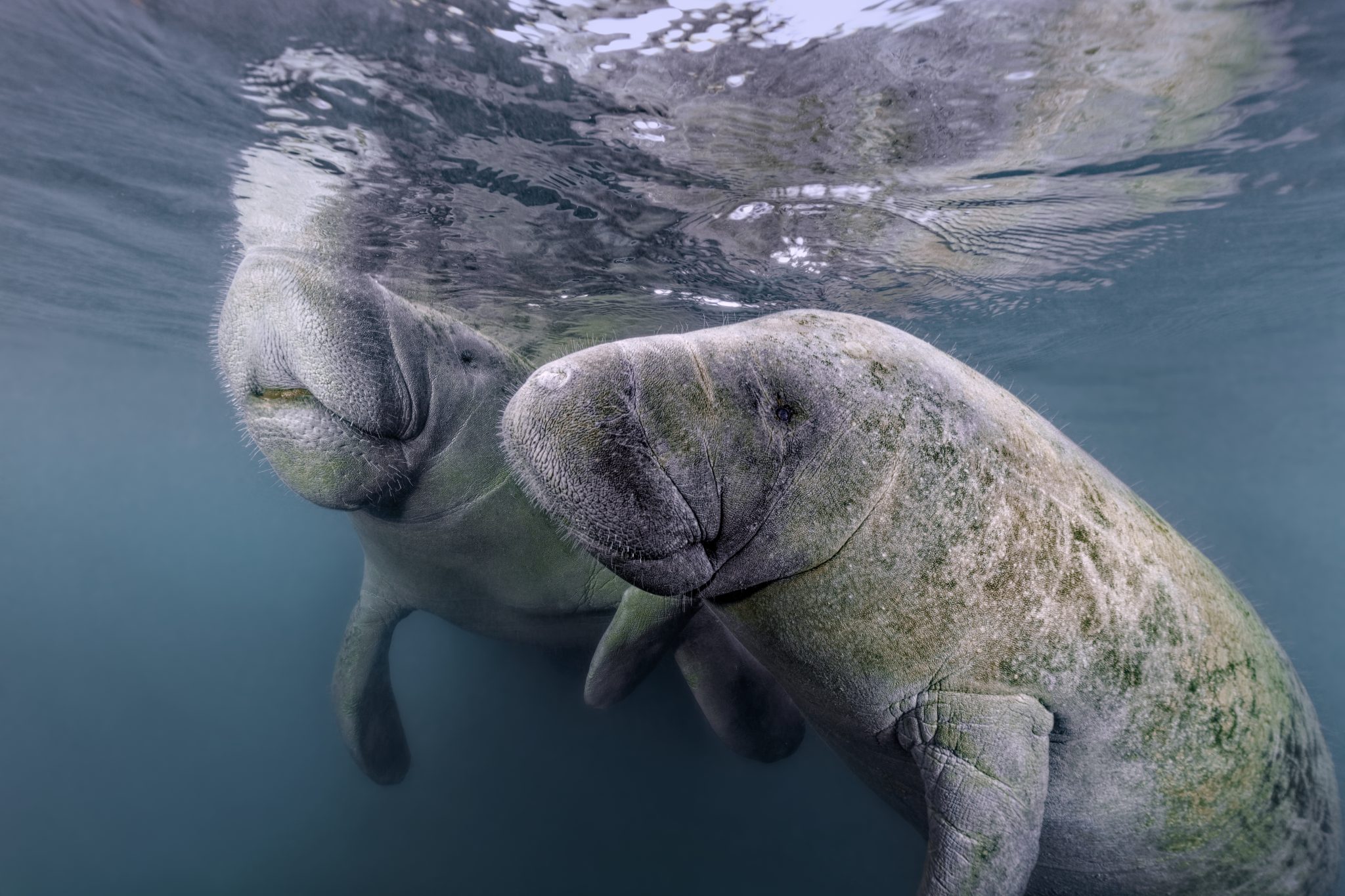
As National Safe Boating Week approaches, Save the Manatee® Club is urging boaters, and anyone that enjoys Florida’s waterways, to respect and protect the defenseless manatees that inhabit our shared waterways. From May 18 to 24, leading up to Memorial Day Weekend, the campaign aims to raise awareness about recreational boating safety and the importance of safeguarding imperiled manatees during the summer boating season. This week also emphasizes the importance of encouraging boaters to enroll in a boating safety course.
Manatees are semi-migratory marine mammals that are commonly found in shallow estuaries, bays, rivers, canals, and coastal areas throughout Florida and neighboring states. With some manatees venturing as far west as Texas and as far north as Massachusetts, collisions between these gentle giants and watercraft have become distressingly frequent. Boat propellers and high-speed collisions pose significant threats to manatees, often resulting in severe injuries or even death.
Save the Manatee Club is calling on all water enthusiasts to follow essential manatee safety tips to ensure the well-being of the imperiled manatee:
- Obey Speed Zone Signs: Familiarize yourself with and adhere to posted speed limits to prevent collisions with manatees.
- Reduce Glare with Polarized Sunglasses: Wear polarized sunglasses to enhance visibility and spot manatees below the water’s surface.
- Recognize Manatee Signs: Learn to identify signs of manatees in the area, such as swirls or flat spots on the water caused by their movements.
- Respect Manatee Sanctuaries: Keep a safe distance from posted manatee sanctuaries and avoid pursuing or harassing these marine mammals, as it is illegal and can disrupt their natural behaviors.
- Report Distressed Manatees: In Florida, promptly report distressed, injured, tagged, or orphaned manatees to the Florida Fish and Wildlife Conservation Commission (FWC) at 1-888-404-FWCC (3922). Outside of Florida, report sightings to the appropriate state agency or rescue organization. A list of agencies to contact is available at savethemanatee.org/report.
- Protect Seagrass Beds: Avoid boating over seagrass beds and shallow areas where manatees may be feeding. Stick to deep water channels while remaining vigilant, as manatees also utilize these channels during their travels.
- Dispose of Fishing Line Responsibly: Anglers should properly dispose of or recycle used fishing line to prevent entanglement hazards for manatees.
“Each year, National Safe Boating Week provides an excellent reminder for all of us to be aware that we share our waterways with vulnerable manatees,” emphasized Patrick Rose, Aquatic Biologist and Executive Director of Save the Manatee Club. “With the recent Unusual Mortality Event on Florida’s East Coast claiming an alarming number of manatees’ lives, it is more crucial than ever to prevent preventable deaths caused by watercraft collisions. By following manatee-safe boating guidelines, such as obeying speed zones and remaining vigilant for manatees, everyone on the water can contribute to the protection of these gentle giants.”
Save the Manatee Club offers a range of free materials to help safeguard manatees and raise awareness about manatee-safe boating practices. Shoreline property owners and park or marina managers can order aluminum dock signs to alert others about the presence of manatees in their areas. Boaters and paddlers can request packets containing a safety tips card, a waterproof boat banner, and a decal to display on their vessels, providing the number to report manatees in distress. To view and request these materials, visit savethemanatee.org/resources. Save the Manatee Club will also be hosting a live webinar for National Safe Boating Week on Tuesday, May 21st at 6pm EST. To register, visit savethemanatee.org/register.
Blogs
The Ocean Cleanup Breaks 10,000,000 KG Barrier

The Ocean Cleanup, the global non-profit project, has removed a verified all-time total of ten million kilograms (22 million lbs.) of trash from oceans and rivers around the world – approximately the same weight as the Eiffel Tower.
To complete its mission of ridding the oceans of plastic, The Ocean Cleanup uses a dual strategy: cleaning up the Great Pacific Garbage Patch (GPGP) to remove the plastic already afloat in the oceans, while stopping the flow of plastic from the world’s most polluting rivers.
Through cleaning operations in the GPGP and in rivers in eight countries, the cumulative total of trash removed has now surpassed ten million kilograms. This milestone demonstrates the acceleration of The Ocean Cleanup’s impact, while underlining the astonishing scale of the plastic pollution problem and the need for continued support and action.
While encouraging for the mission, this milestone is only a staging point: millions more tons of plastic still pollute our oceans and The Ocean Cleanup intends to continue learning, improving and innovating to solve this global catastrophe.
This announcement comes as governments from around the world meet to continue negotiations to develop a new legally binding instrument to end plastic pollution at INC4 in Ottawa, Canada. Representatives of The Ocean Cleanup will be in attendance and the organization will be urging decision-makers to collaborate towards a comprehensive and ambitious global treaty which addresses plastic at all stages of its life cycle and in all marine environments worldwide, including in areas beyond national jurisdiction.
It is encouraging to see that the need for remediation is reflected in the various options for potential treaty provisions. It is essential that the final treaty contains clear targets for the remediation of legacy plastic pollution, and reduction of riverine plastic emissions.
Tackling plastic pollution requires innovative and impactful solutions. The treaty should therefore incentivize the innovation ecosystem by fostering innovations that make maximal use of data, technology and scientific knowledge – such as those designed and deployed by The Ocean Cleanup.
‘After many tough years of trial and error, it’s amazing to see our work is starting to pay off – and I am proud of the team who has brought us to this point.’ said Boyan Slat, Founder and CEO of The Ocean Cleanup. ‘While we still have a long way to go, our recent successes fill us with renewed confidence that the oceans can be cleaned.’
The Ocean Cleanup was founded in 2013 and captured its first plastic in 2019, with the first confirmed catch in the GPGP coming soon after the deployment of Interceptor 001 in Jakarta, Indonesia. After surpassing one million kilograms of trash removed in early 2022, the non-profit project has since progressed to the third iteration of its GPGP cleaning solution, known as System 03, and a network of Interceptors currently covering rivers in eight countries, with more deployments set for 2024.
About The Ocean Cleanup
The Ocean Cleanup is an international non-profit organization that develops and scales technologies to rid the world’s oceans of plastic. They aim to achieve this goal through a dual strategy: stemming the inflow via rivers and cleaning up the legacy plastic that has already accumulated in the ocean. For the latter, The Ocean Cleanup develops large-scale systems to efficiently concentrate the plastic for periodic removal. This plastic is tracked and traced through DNV’s chain of custody model to certify claims of origin when recycling it into new products. To curb the tide via rivers, The Ocean Cleanup has developed Interceptor™ solutions to halt and extract riverine plastic before it reaches the ocean. Founded in 2013 by Boyan Slat, The Ocean Cleanup now employs a broadly multi-disciplined team of approximately 140. The foundation is headquartered in Rotterdam, the Netherlands.
For more information, visit: theoceancleanup.com and follow @theoceancleanup on social media.
-

 Gear Reviews1 month ago
Gear Reviews1 month agoGEAR REVIEW – Revolutionising Diving Comfort: The Sharkskin T2 Chillproof Suit
-

 Blogs3 weeks ago
Blogs3 weeks agoDive Indonesia Part 3: Dive into Lembeh Trip Report
-

 Blogs2 months ago
Blogs2 months agoMurex Resorts: Passport to Paradise!
-

 Blogs3 months ago
Blogs3 months agoDiver Discovering Whale Skeletons Beneath Ice Judged World’s Best Underwater Photograph
-

 News3 months ago
News3 months agoPADI Teams Up with Wellness Brand Neuro to Drive Ocean Change and Create a Blue State of Mind
-

 Blogs2 months ago
Blogs2 months agoSeagrass Awareness Month brings critical food source for Manatees to centre stage
-

 Marine Life & Conservation3 months ago
Marine Life & Conservation3 months agoSave the Manatee Club launches brand new webcams at Silver Springs State Park, Florida
-
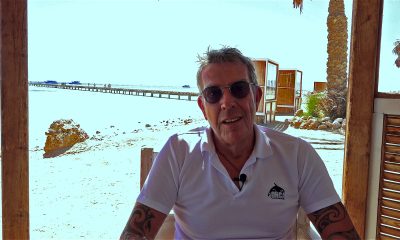
 Blogs2 months ago
Blogs2 months agoSOMABAY: Scubaverse interviews Wolfgang Clausen, General Manager, ORCA Dive Clubs


